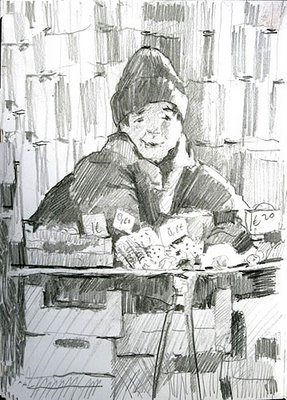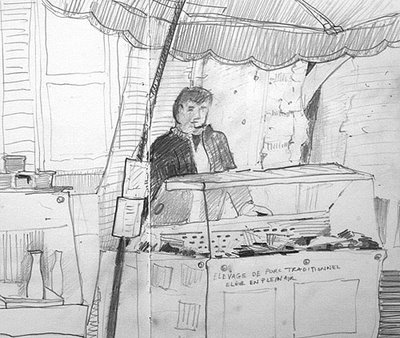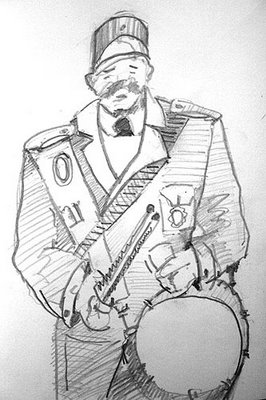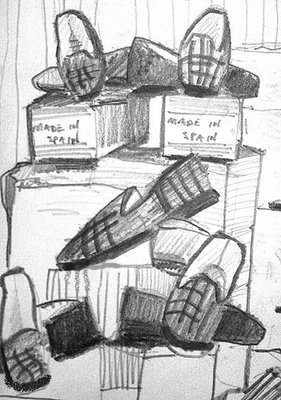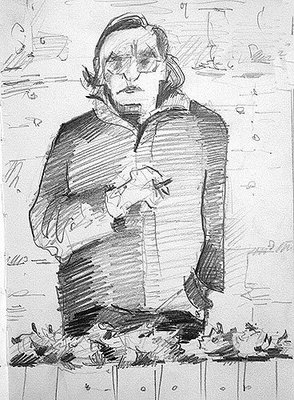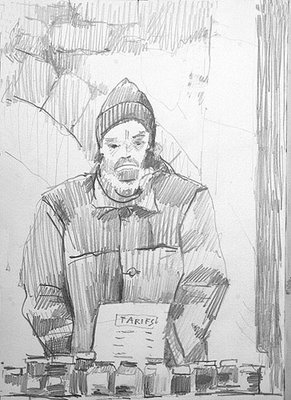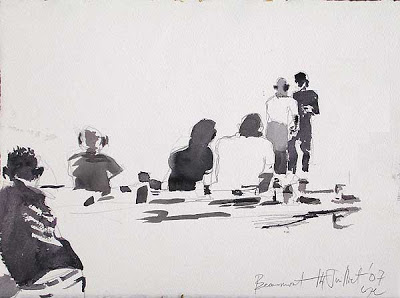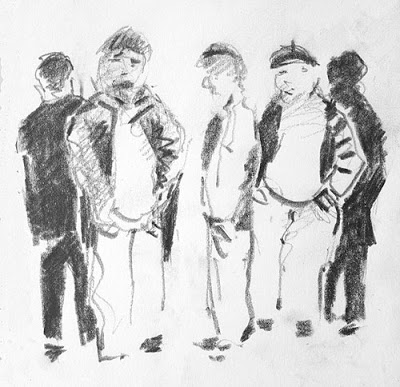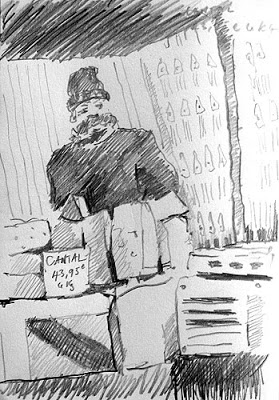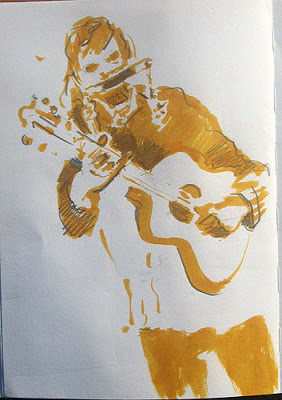‘Amigo 1’ Graphite A5 sketchbook © the artist NFS ‘Amigo 2’ Bistre medium size drawing – A3 © adam cope make me an offer, LOL – kill me with silence & whine about the price of art… OK… then go buy your 70 euros lunch in a restaurant then… hhehheeee.. i’ll eat the radishes &…
Category: French market places
Drawings & paintings of market places in south west France. Often in the Dordogne at Issigeac, Castillonnès or Bergerac
New Label : French Market Places
GraphiteA5 sketchbook© The Artist. ‘Un producteur’ of traditional pork, reared in the fresh air. Cruelty free. Said his pigs were a bit muddy at the moment but that I could come & draw them in spring time. I ordered a ham for Christmas Day breakfast. There was anglo-french carol singing, beautiful to hear, even if…
Dessin d’un Garde Champêtre – Drawings of French Market Places
‘Le Garde Champêtre de Bergerac, Périgord’ graphite A5 sketchbook © The Artist. OK, new category title ‘FRENCH MARKET PLACES’, which I must update the previous posts in this blog as some of the buskers play in the market places & soome of the portraits are of local farmers selling their wares. So to simplify those…
Vendeur de Pantoufles – Drawings of French Market Places
Detail ‘Vendeur des Pantoufles’ graphite doublespread A5 sketchbook ©The Artist. This bedroom slipper salesman caught my eye in the market today. Am I going mad? Has the winter wet & grey season driven out my plein-airist, colourist poetic landscape urges?Slippers have the same connotations in France as elsewhere. Someone who is ‘Pantouflé’, speaking familarly, is…
Marché d’Issigeac en Dordogne
‘Venduer des Chanterelles Jaunes’ A5 sketchbook – graphite © adam cope ‘Téléthon … Allez les Crêpes’ A5 sketchbook – graphite © adam cope Marché d’Issigeac en Dordogne Fund raising event in Issigeac. Crêpes on a cold & frosty morning. A man selling yellow mushroooms from the Landes, by the sea where it has not frosted.…
Hardtimes in Rural French Markets
‘Vendeur du Miel’ Graphite A5 sketchbook © adam cope Poverty & not spending in Rural French Markets Freezing morning in Castillonnès market. Drew this (cold) seller of honey. The writting says ‘Tarif’. Hand-made products in rural French markets can be pricey. Nobody was buying his honey. When I finished sketching him, I went over to…
Quatorze Juillet en Dordogne
14 Juillet en Dordogne…parties & fireworks. Hoping to get out painting tonight (teaching tomorrow) as it is a good paint. Next post is about the English in Dordogne & house prices… & here’s an expert from last year’s bloggy Jour de la Republique… TONALITY : ’14 Juilliet – Fête de la Republique’ ‘Quatorze Juillet, Beaumont,…
Exhibiting in Paris? Ecomonic Recession?
‘Mains dans les Poches’ A4 sketch pencil ©adam cope (To have one’s hands in one’s pockets in colloquial french means to be NOT spending…) Exhibiting in Paris? I’m off to Paris for a week or so , so no blogging , no computers for a bit. Intend to speak to the gallery close to the…
Markets in Dordogne – Inflation in France
‘Cantal 43,95 €uros le Kilo’ 2008 A5 pencil © The Artist. Markets in Dordogne Cold morning in Issigeac marché, everyone dressed up against the chilly wind. Hats ‘de rigor’. This market stall owner dresssed up with a ‘chimney-stack’ type hat & ‘handle bar’ moustache. Smiling. These winter off-season markets are friendly events 🙂 Inflation in…
busker – les artistes de la rue en Dordogne
‘Patrice’ #1 2008 ink A5 © adam cope ‘Patrice’ #2 2008 ink A5 © adam cope don’t he look like bob dylan? sounds just like him too… hhhhhhahahahahhahahaaaaaaaaaaaa Hey mister tamborine man Hey mister tamborine man play a song for me i ain’t going no where & it all seems the same to me… in…

